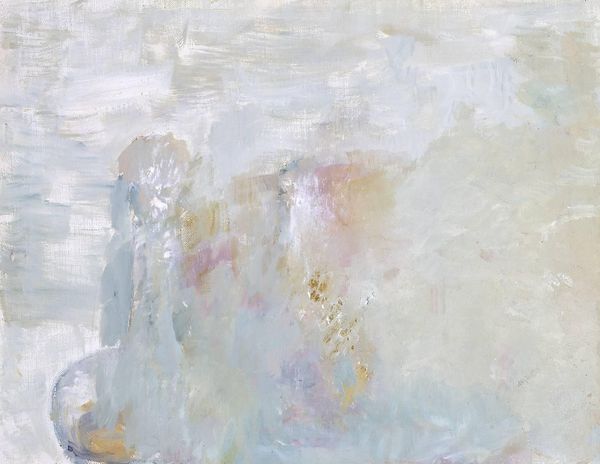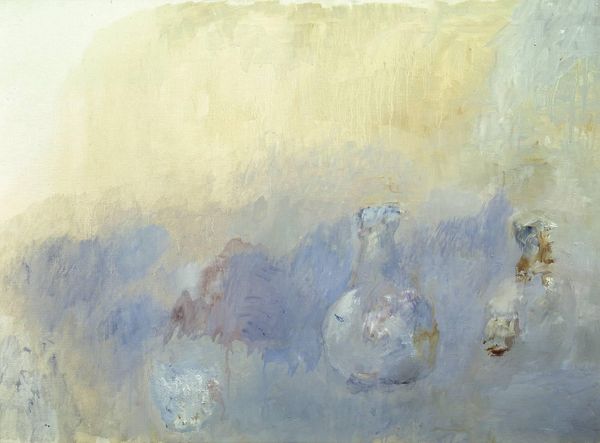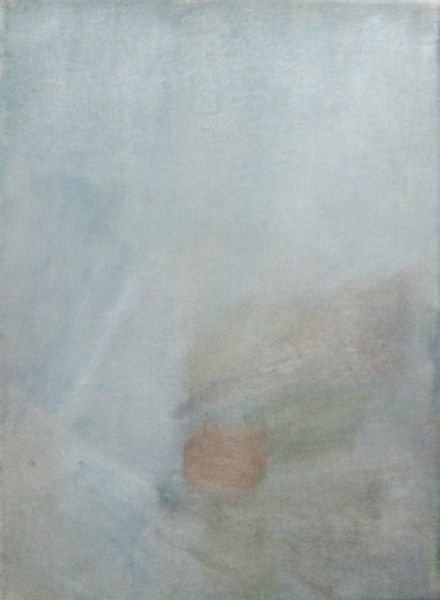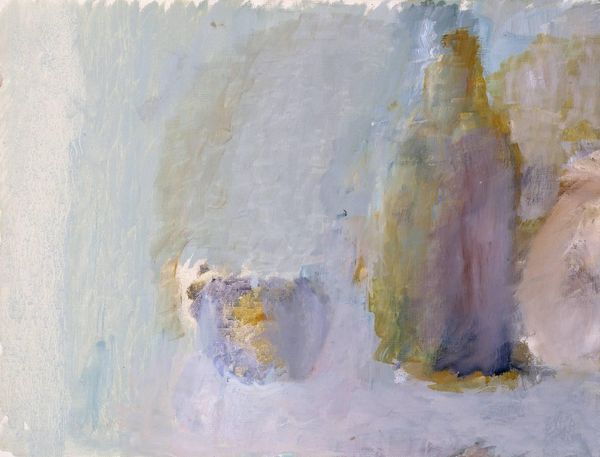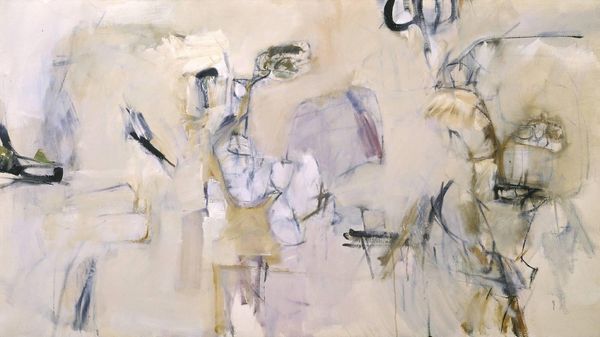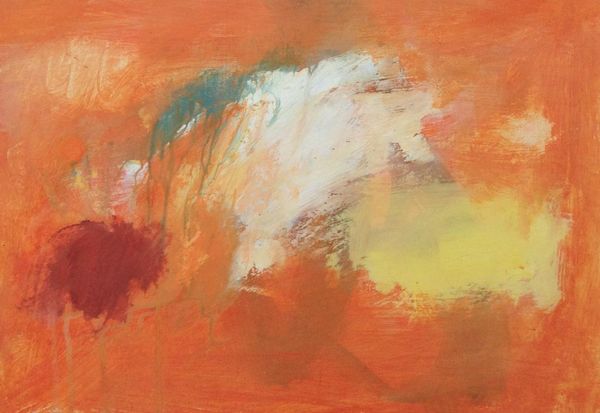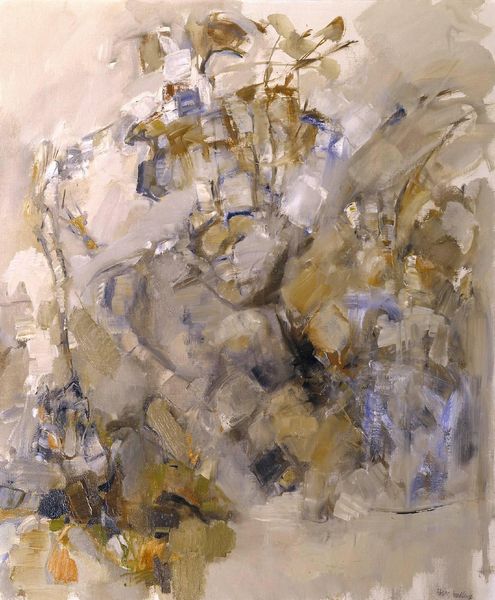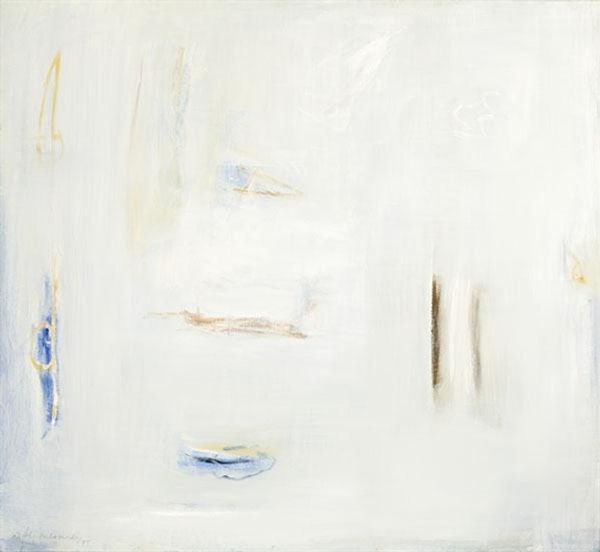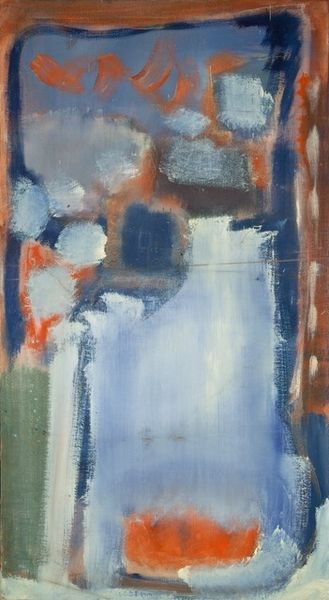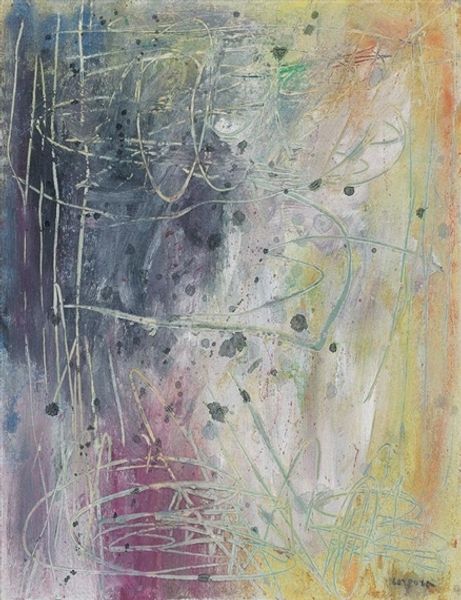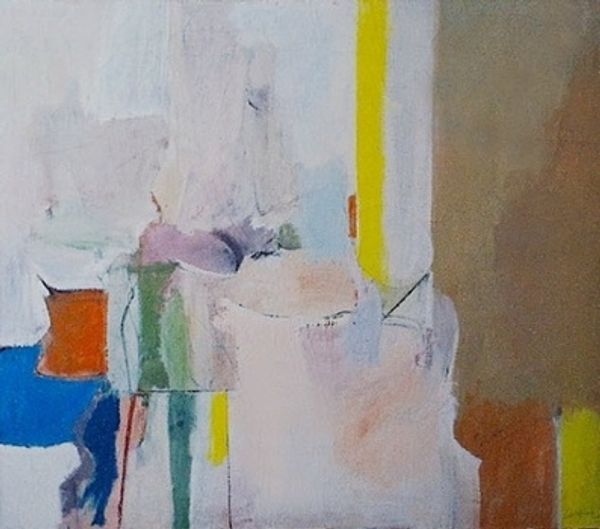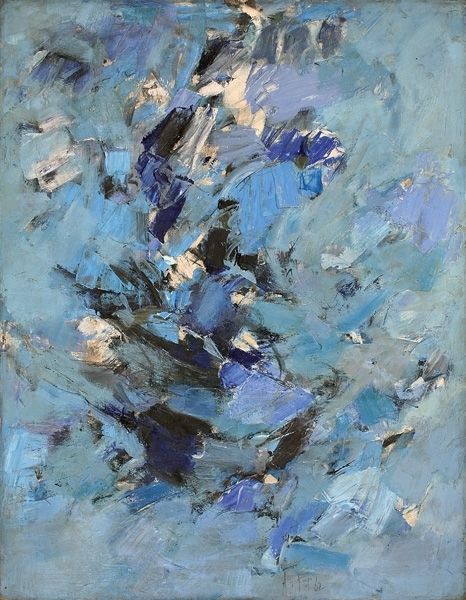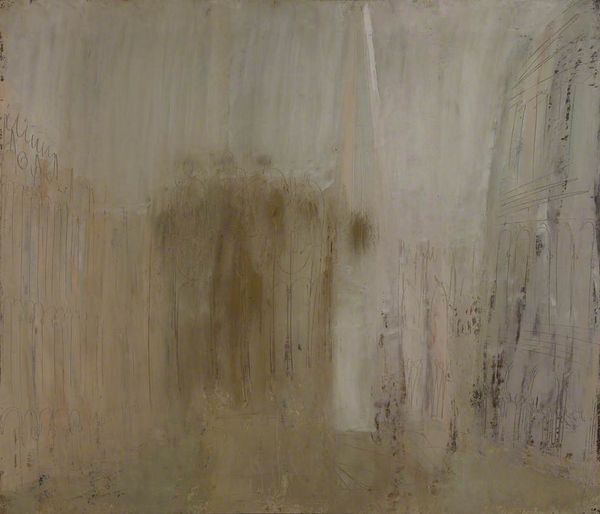
Dimensions: support: 328 x 410 mm
Copyright: © The estate of Adrian Stokes | CC-BY-NC-ND 4.0 DEED, Photo: Tate
Curator: This is Adrian Stokes' "Still Life: Last Eleven (No. 4)," currently held in the Tate Collections. Editor: It's incredibly ethereal, almost dreamlike. The forms seem to emerge and recede simultaneously, very quiet and subdued. Curator: Stokes’ exploration of still life connects to broader modernist themes. It is tied to his grappling with the psychoanalytic theories of Melanie Klein, where the still life becomes a stage for symbolic drama. Editor: I see that. The composition feels less about capturing objects and more about the emotional charge these objects carry and the associations we might project onto them. It's very compelling as a piece of visual poetry. Curator: It's also important to consider his interests in art criticism and ballet. He saw art as an arena for exploring sensuality and the materiality of paint was part of this. Editor: I think that's why the texture is so captivating. It reminds me that the act of seeing is itself a subjective experience, always colored by our past. Curator: Absolutely, art can reflect our own emotional landscape and the cultural forces shaping our perception. Editor: It’s certainly given me much to consider. Curator: As it has for me.
Comments
tate 6 months ago
⋮
http://www.tate.org.uk/art/artworks/stokes-still-life-last-eleven-no-4-t03579
Join the conversation
Join millions of artists and users on Artera today and experience the ultimate creative platform.
tate 6 months ago
⋮
Adrian Stokes's last eleven paintings were all completed after the onset in July 1972 of his final illness, ten of them being begun after that time. The last nine belong to the Tate Gallery. The nature of, and treatment for, Stokes's illness, a tumour of the brain, help account for these paintings' particular character. Stokes stated that during this last period he was able to achieve the results he was seeking as a painter. All these works were painted at his home in Hampstead, north London, and the vessels represented include several made by his wife Ann, whose pottery was in their house. Gallery label, September 2004
